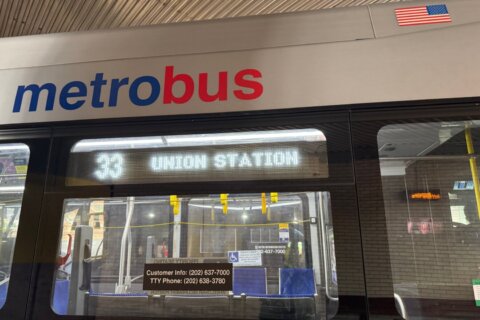This video is no longer available.
Ask anyone at a Metro station and they’ll tell you the “unwritten” rule of riding any escalator is that you stand to the right and walk on the left. Period. Eventually, once D.C. becomes the 51st state, failure to do so will result in your deportation back to the rural outpost you surely must have come from.
“I just grew up that way. That’s just the way it’s always been,” said one woman getting ready to ride an escalator to a Metro platform. “If people are in a rush, there’s easy flow up the escalator versus kind of waiting.”
And if you’re an individual at the front of that line of people rushing to either get off the platform and onto the street, or onto the platform before that next train leaves, then yes, having that wide-open, or at least consistent, movement in front of you on the left will help get you where you need to. But what if you’re not in the front? If a big group of people has two sides of an escalator, but everyone is slowly merging into one side, is that still faster?
A new study out from University of Maryland business professor Michael Fu said the whole “walk left, stand right” ethos is more inefficient and actually makes it slower for more people.
“If you let people walk on the left side, but only stand on the on the right side, then what will happen is that it will take a long time to clear the platform,” said Fu, who is the chair of management science at the Robert Smith School of Business at Maryland. “Usually there’s a lot more standers than walkers and it will be clogged up where the left side will be kind of underutilized. So those are the two trade-offs — the time, the average time, to get out of the station versus the time to clear the actual platform.”
Fu’s study suggests the best, most efficient way for everyone is to just let everyone get on to start, and then allow people to sort themselves while on the escalator instead of beforehand.
“The people that get on the left side, they don’t have to be what I would call ‘full walkers.’ They can be sort of ‘half walkers,'” said Fu. “They walk, and they walk up the escalator a little bit so there’s some space on the right, and they go over and then they stand the rest of the way. And then at some point, when most of the quicker walkers have cleared the station, then you might make it all standers until the platform clears.”
The most impatient, self-important types may not like the extra few seconds they lose, but Fu said it works better for everyone else moving in and out of the system, and will reduce the size of the bigger groups of people more quickly, making it easier for everyone still trying to board.
Get breaking news and daily headlines delivered to your email inbox by signing up here.
© 2024 WTOP. All Rights Reserved. This website is not intended for users located within the European Economic Area.








